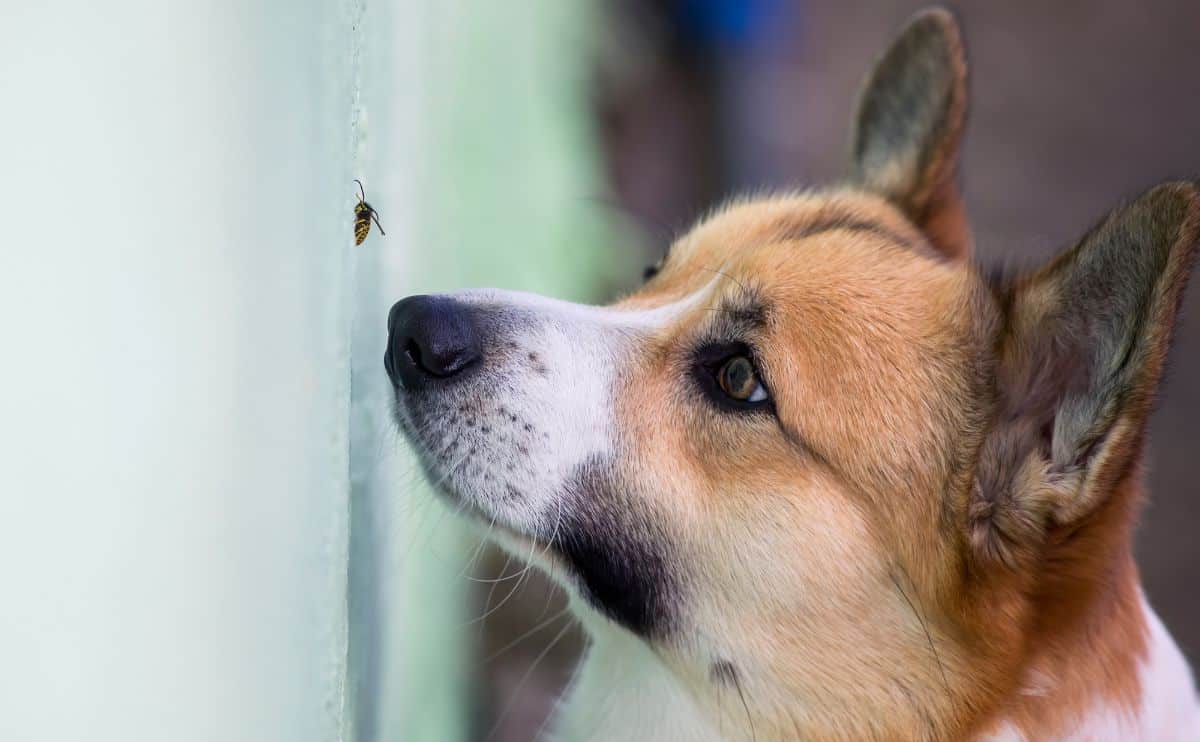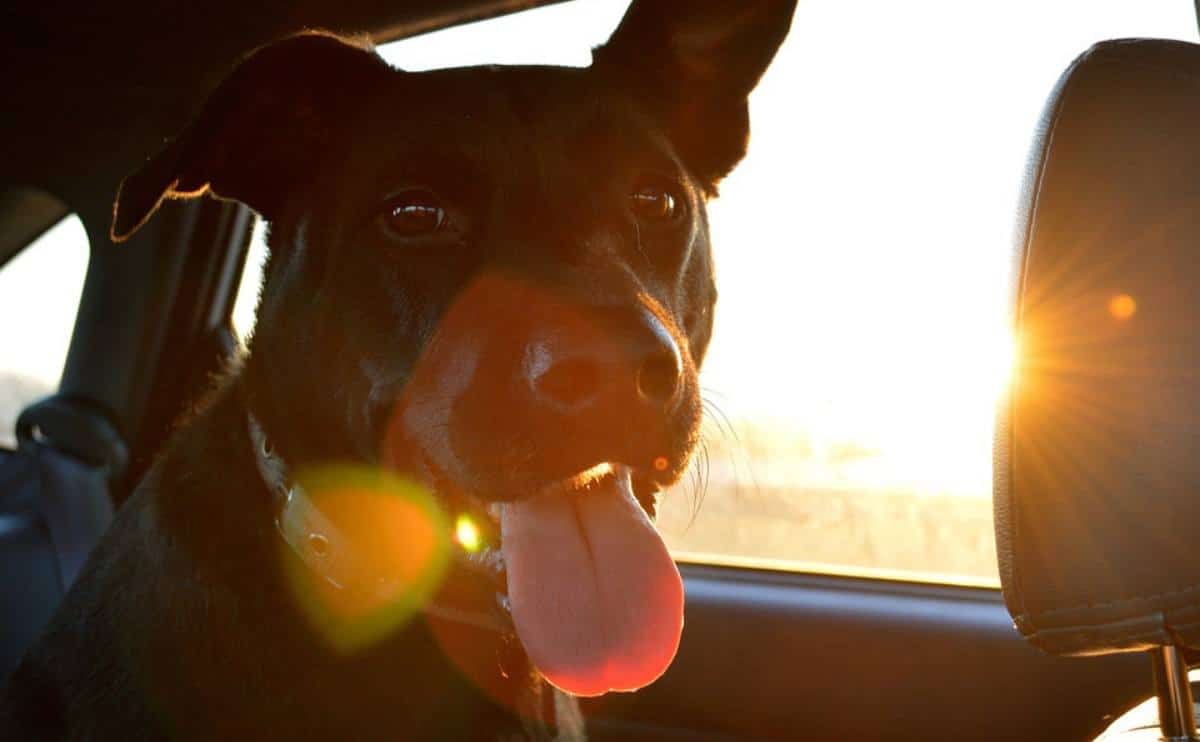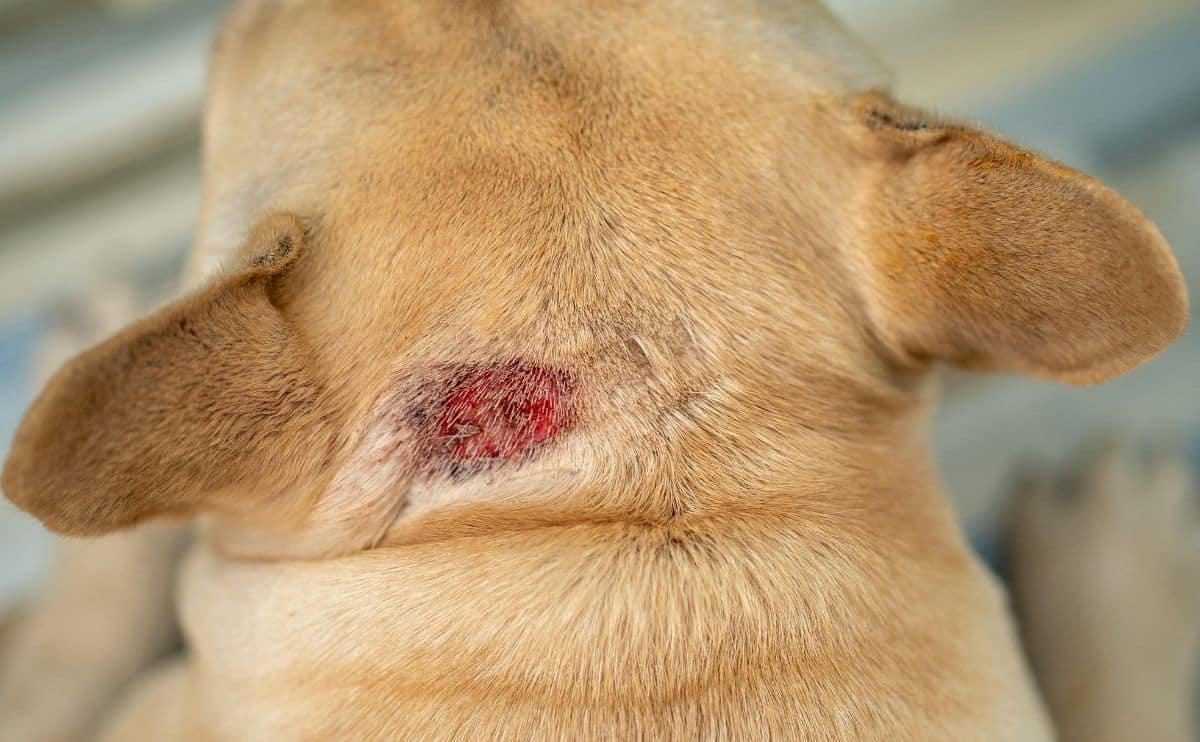Dog Vomit Color Guide: What Does Your Dog’s Vomit Says About Their Health?
When you purchase through links on our site, we may earn a commission. Here’s how it works.
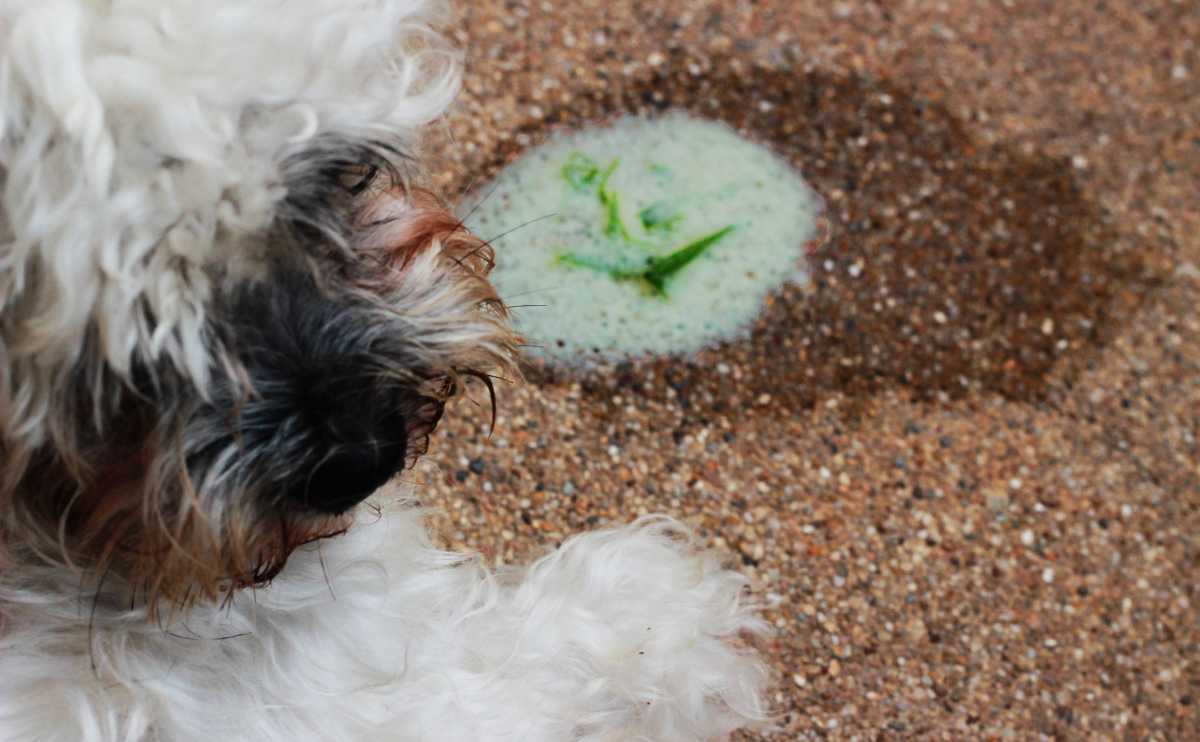
What do your dog’s vomiting habits say about their overall health? Find out what color your dog’s vomit should be and why the color and consistency matter.
Table of Contents
Our canine friends vomit from time to time – it’s practically a given when you’re a pet parent that, at some point, you will be cleaning up after them. There are endless reasons why our dogs may get sick, and it’s not surprising when we see what habits they have at times. But is it possible to tell why they’re vomiting from the color of their vomit? A dog vomit color guide may be helpful for you to know when you need to worry about your furry best friend.
Dog Regurgitation vs Vomiting
To understand dog vomit colors, you must first differentiate between a dog vomiting and regurgitating. These are often confused for the same thing but are, in truth, distinctly different.
What Is Vomiting?
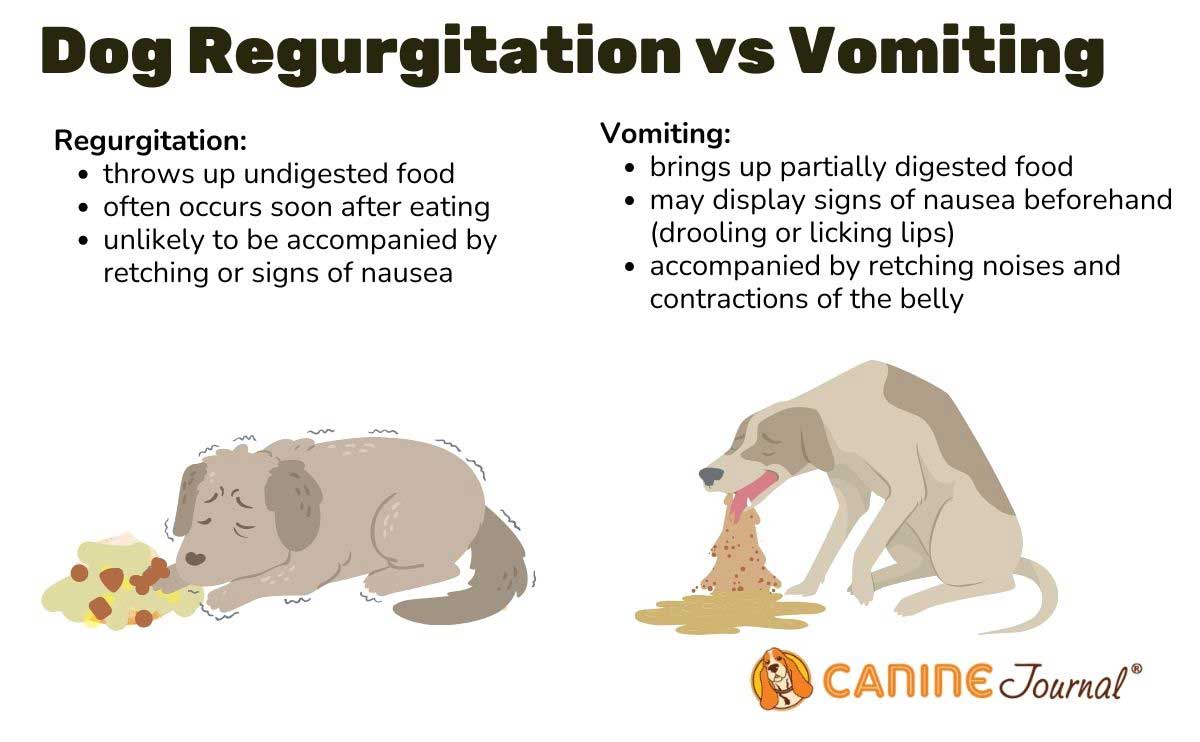
Vomiting is where a dog brings up partially digested food. Your dog may display signs of nausea beforehand, such as drooling or licking their lips, and the vomit will be accompanied by retching noises and contractions of their belly.
So, what color should dog vomit be? Well, the color of dog vomit will be similar to what they’ve eaten but will appear digested (think along the lines of adding water to their meal and putting it in a food processor). There are lots of possible colors for ‘normal’ vomit, from a dog throwing up yellow foam to a green or white appearance to the vomit. Of course, how digested the food appears depends on how long ago they ate.
What Is Regurgitation?
In contrast, regurgitation is when a dog throws up undigested food. It often occurs soon after eating and is unlikely to be accompanied by retching or signs of nausea.
Regurgitated food will look very similar to what your dog has just eaten or may take on the form of the stomach or esophagus and appear like a compacted cylinder of food. The color will depend on what your canine friend has just eaten. Vomiting is much more active and accompanied by heaving or grunting.
What Does The Color Of Dog Vomit Mean?
Many illnesses can cause vomiting, and it can be challenging to pinpoint the exact cause. Vomit can take on many colors (not quite all the rainbow shades), and the precise color of dog vomit may help identify the cause. However, some colors on the dog vomit chart are more concerning than others. Here, we list the common dog throw-up color meanings to help you decide how concerned you need to be.
Yellow Dog Vomit
Why is my dog throwing up yellow liquid? Rest assured that this is a ‘normal’ vomit color. Yellow dog vomit normally contains bile, a substance produced by the liver and stored in the gallbladder. A dog throwing up yellow bile typically occurs when their stomach is empty. It may appear foamy or liquid in consistency.
When dogs are feeling sick or have indigestion, their bodies may produce more bile than usual. Larger amounts of bile in vomit may have a yellow-green appearance. Yellow dog vomit is rarely a cause for concern unless it frequently occurs, although you should consider your dog’s overall health and other symptoms.
A dog frequently throwing up yellow bile is a condition referred to as bilious vomiting syndrome (BVS). Dogs with the condition may throw up yellow bile in the morning or after not eating for a long amount of time. This is not a life-threatening condition, but you should speak with your vet. Often, treatment involves giving pups smaller, more frequent meals or a late-night snack.
Green Dog Vomit
Green vomit could come from something your dog ate, such as grass. Dogs eat grass as a regular part of their diet to get fiber into their digestive system. Some dogs may eat grass excessively if they’re feeling nauseous. Green vomit could also indicate there is increased bile in your dog’s stomach.
When it comes to the dog vomit color scale, green isn’t usually a cause for concern. However, if your dog is vomiting excessively or for a prolonged period, then seek veterinary advice.
White Dog Vomit
White or pale vomit may contain food that has been digested, especially if your dog hasn’t eaten for several hours. But if you have a dog throwing up white foam, this may indicate the dog’s stomach is empty and they’re vomiting saliva and liquid only.
Throwing up white foam may also indicate a gastrointestinal infection from a parasite, ingestion of a foreign object, pancreatitis, or, less commonly, ingestion of a toxic substance or chemical.
If your dog is trying to vomit but cannot, or they’re repeatedly bringing up small amounts of white foam, this could indicate bloat or more severe gut problems. This could be an emergency, and you should call the nearest open veterinary clinic immediately.
Black Dog Vomit
Black vomit can be due to your dog ingesting something of a similar color (such as farm animal poo or mud/dirt). However, black vomit can also indicate digested blood caused by eating toxins or bleeding within the gut. Black vomit shouldn’t be considered normal, and urgent veterinary advice should be sought.
Red Dog Vomit
Red vomit is of concern as it usually means the vomit contains blood. This could be due to bleeding within your dog’s intestines, toxin ingestion, or a problem with your dog’s blood clotting.
If your dog has been vomiting excessively for a short period, the vomit may be streaked with red blood. This could be because small blood vessels in the stomach or esophagus have burst due to the force of vomiting.
Red vomit should be seen as severe on the dog vomit color chart. Contact your veterinarian for urgent advice.
Black Or Red Vomit Is An Emergency
Black and red vomit should always be considered emergencies. Seek in-person veterinary care as soon as possible for your pup if you see black or red vomit.
Brown Dog Vomit
Vomit often takes on the color of what your dog has eaten. Do you have a dog throwing up brown stuff? Many dog foods and kibble are brown, so this may be why your dog’s vomit is brown. Brown is a common color for dog vomit.
As much as we love our furry friends, we must admit some have less than choosy dining habits. Brown vomit might mean your dog has scavenged something unsavory or eaten poo. Eating poo has a name – coprophagia. The clue might be in the smell of the vomit.
Dark brown vomit is more concerning. Digested blood may appear dark brown or have the appearance of coffee granules mixed in with the vomit. This could indicate bleeding within your dog’s intestines. If your dog is throwing up brown stuff repeatedly, you should contact your veterinarian.
Orange Dog Vomit
If your dog’s vomit is an orange color, it could be for a few reasons. While bile is usually a yellow liquid, it can be tinted orange. Orange vomit may be a sign that your dog’s stomach was empty when they were vomiting.
Vomit can also take on the color of food or food coloring that a dog eats. Look at your dog’s food and what they’ve recently eaten to determine if your dog’s vomit is an orange color because of food dye.
What The Veterinarian Says About Dog Vomit Colors
Fellow veterinarian Dr. Rebecca MacMillan, BVetMed, BSAVA, PGCertSAM, MRCVS, a companion animal veterinarian in Gloucester, United Kingdom, offers some guidance on dog vomit color and when to be worried.
“The color of a dog’s vomit can sometimes be an indication of the severity of their condition. One of the main things to look out for is whether there is any blood present in the vomit. This may be seen as a bright red or pink color, or it could look like brown/black digested coffee grounds. Blood in the vomit indicates severe inflammation, and you should seek urgent help for your pet. In my experience, hemorrhagic (bloody) vomit can be pretty serious and requires immediate medical intervention,” Dr. Rebecca MacMillan.
Dr. MacMillan also addresses clear vomit, “Another vomit color to look out for is clear fluid, which may mean your dog is unable to hold water down. This could put them at risk of dehydration. I have seen this in dogs with severe nausea but also foreign body obstructions, which are an emergency. Yellow fluid vomit is often seen when dogs are sick on an empty stomach, commonly first thing in the morning. White froth or foam-like vomit is non-specific but can sometimes be seen when your dog is coughing excessively, too, for example, when suffering from infectious kennel cough. So, monitor your pet closely to see if they are coughing or vomiting.”
“If your dog is suffering from a mild stomach upset and is still bright, with no evidence of any blood, then bland food for a few days should help things resolve. However, if your dog is lethargic, struggling to hold down fluids, or they are bringing up blood, then you should always seek veterinary help sooner rather than later,” says Dr. MacMillan.
Dog Vomit Color Guide
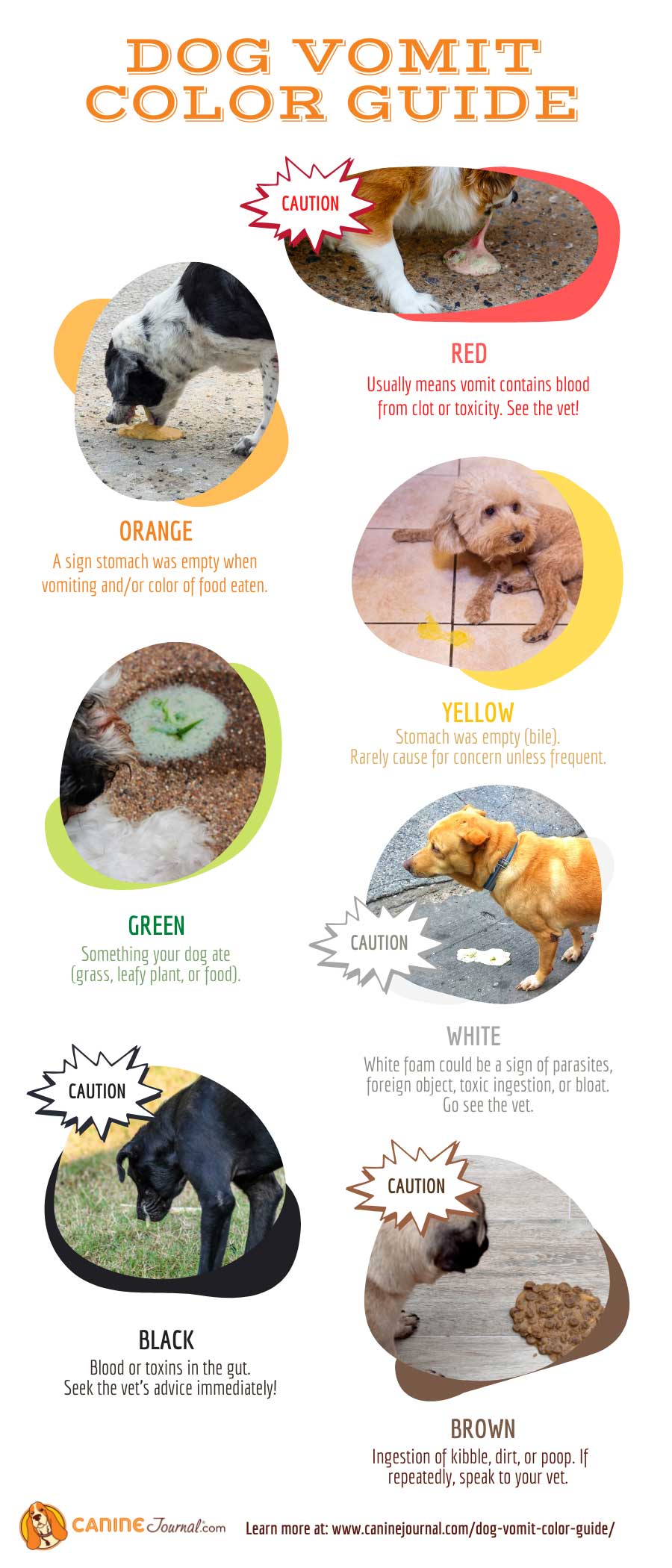
What Does The Consistency Of Dog Vomit Mean?
No one wants to hang around for long examining their dog’s vomit, but before cleaning up after your canine friend, it’s worth looking at what they’ve vomited. The consistency and content of the vomit might help understand why they’re vomiting and when to seek help.
Chunky Dog Vomit
Dog vomit may be filled with food they have recently eaten. This may be fully or partially digested, depending on how long ago they ate. They may be having trouble digesting their food, or something they ate may not suit them.
Liquid Dog Vomit
Dog vomit with nothing in it may mean no food to throw up, and they have an empty stomach. This can happen if they haven’t eaten recently or persistently vomited and have already emptied their stomach. It can be a sign of indigestion, a build-up of stomach acid, or acid reflux. If your dog is throwing up yellow liquid, it may be bile.
Foamy Dog Vomit
When dogs feel sick or nauseous, their bodies produce more saliva. When saliva mixes with the stomach contents, it forms a foam-like consistency (often clear or white).
Throwing up white foam normally means your dog’s stomach is empty. The causes of vomiting are varied but may indicate indigestion or an upset stomach from something they have ingested.
Foreign Objects In Dog Vomit
Foreign objects being thrown up, such as toys, rocks, or fabric material, is a way for your dog’s body to get rid of items that aren’t meant for digestion. Ingestion of foreign objects is nearly always of concern as it may mean your dog has eaten or chewed things that are dangerous to them.
There is a risk that they can’t vomit all of the foreign material they’ve ingested. If any gets stuck, it can cause an obstruction. This could result in a severe medical emergency.
When Should I Worry About My Dog Vomiting?
If the vomiting is a one-off, it’s usually nothing to worry about as a general rule. If it happens repeatedly, or if you’re concerned, always contact your veterinarian as soon as possible. Signs your dog may need urgent veterinary care for vomiting include:
- Loss of appetite
- Lethargy
- Weakness
- Abdominal pain or swelling
- Potential toxins have been ingested
- Foreign material in the vomit (e.g., toys, plastic, or clothing)
- Red vomit or vomit that contains blood
- Black vomit
- Dark brown vomit
Did You Know Pet Insurance Can Cover Illness?
Seeing your dog unwell can be very upsetting. If it only happens once in a while, it’s unlikely to be anything to worry about.
Some dogs have a reputation for eating just about anything, so vomiting can be a useful protective mechanism. However, the next time your pooch is feeling sick, pause to consider what they’ve vomited – it may help you identify what is wrong and indicate when to seek medical attention for your pet sooner.
If you’re signed up for pet insurance, many of the expenses may be eligible for coverage, saving you a hefty vet bill. Things like vomiting, diagnostic testing, and more can be eligible for coverage through pet insurance if it’s not associated with a preexisting condition. Our pet insurance reviews can help you learn the basics and see the key features of popular providers.
Keeping Your Pup Healthy
A lot of effort goes into keeping your pup healthy. Regular exercise, mental interaction, and plenty of love are all part of what they need. Along with that, dogs need a healthy diet suitable to their particular life stage. A healthy diet is the cornerstone of good canine health. Regular veterinary care is also a pivotal part of the equation. You can discuss concerns like recurrent vomiting and proper diet, as well as take steps for preventive care and possibly treat issues before they become serious. Your veterinarian and you are a team to keep your pup happy and healthy and actively by your side for as long as possible.
